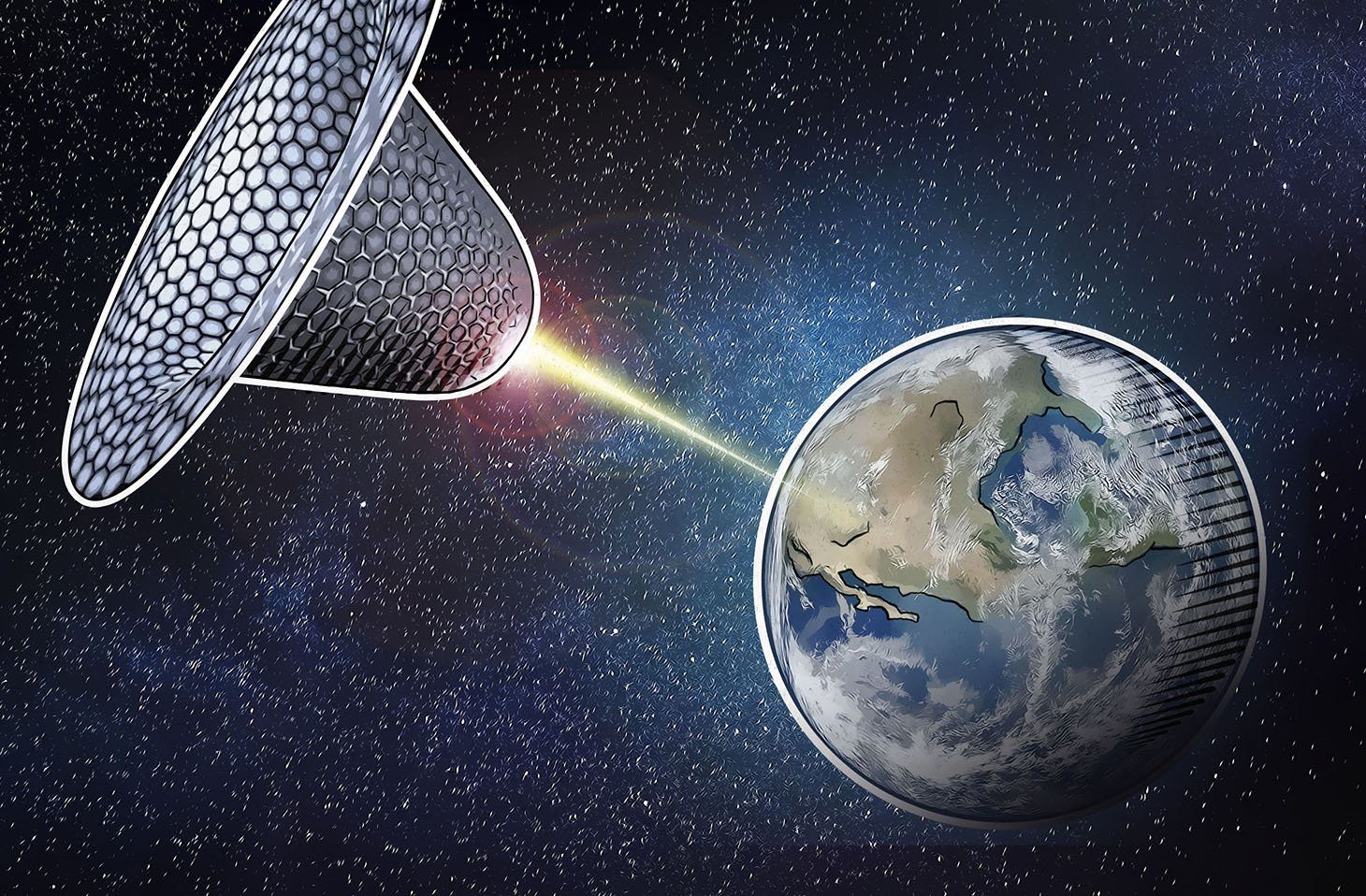It’s only human to ponder the future, to imagine how our world and lives will change over the coming decades and centuries. The starting point for such speculation is always the here and now — the problems of our own time. For example, many begin with the continuing question of peak oil and gas — still our main sources of energy.
A German team that spoke at the 34th Chaos Communication Congress presented its vision of the ideal source of energy. To be considered, alternative energy sources must:
- Last forever (or close to it);
- Not harm nature;
- Be available always and everywhere;
- Create economic benefits, even in development phases, through the use of existing technologies.
Anja Kohfeldt and Stefan Junk envisage a future of solar stations in near-Earth orbit; their colleague Kristoph Sieg is sure that today’s power plants are set to be deposed by flying wind turbines.
A cosmic microwave
The first alternative source of energy the team discussed at the congress was solar — but not solar as we know it: The scientists propose launching a huge solar power station into near-Earth orbit. Doing so, they say, will solve all at once a host of issues currently preventing us from making maximum use of the sun: clouds, location (both location selection and the need for multiple locations for 24/7 operation), and infrastructure for transferring energy on terra firma. The energy collected can be transferred to the Earth’s surface by means of microwave radiation.
The system is not without drawbacks, however. First, the construction and launch costs would be immense, running into the tens of billions of dollars, according to preliminary estimates. Second, the orbit would have to be constantly adjusted to compensate for the pull of the moon and other impacts, which is tricky and also not cheap.
Third, and most thorny, is the transfer of energy. Generating a microwave beam and transmitting it to Earth requires a huge (about 1 km long) space-based antenna, and an even larger ground-based receiver (up to 5 km in diameter). What’s more, a misdirected beam would be catastrophic, frying everything in its path to a crisp. That’s a frightening thought even if one considers only the chances of a computing error, never mind the prospect of villainy.
Nevertheless, the idea is already being probed by no fewer than three space agencies: NASA, Japan’s JAXA, and China’s CNSA. It’s still early days, but research is under way, and the technology is improving, so watch this space (and, well, space).
Wind of change
Scientists have another alternative to oil, gas, and nuclear energy up their sleeve, and this one seems a bit more realistic — to begin with, this tech doesn’t involve any Death Star–like installations. The idea is to give wind turbines a makeover, downsizing them from hulking windmills to unmanned aerial vehicles (UAVs) attached to a ground station by cable.
Current wind turbines are often motionless, because the movement of air masses at the altitude of a standard wind turbine is very irregular. Drones, on the other hand, climb to altitudes ranging from 200 meters to a kilometer. The winds in this corridor are much stronger and more stable.
A generator can be mounted either on a drone (whose rotating blades will generate power), or at the ground station (where energy will be generated by the drone pulling on the cable under the influence of the wind). It is, in theory, a near-perfect energy source: available always and everywhere, harmless to nature, and requiring no expensive R&D.
Nor is the idea new, the first such projects having been proposed back in the 1970s. However, the task of automatically controlling a relatively low-altitude flight along a complex trajectory requires serious computational power. Computers that powerful yet compact enough for small aircraft appeared only in recent years.
Now the idea is snowballing: Open-platform software has been developed and put online, enabling both it and the structural design of the actual drones to be tested in action and fine-tuned by as many people as possible. If you’re that way inclined, you too can join the testers. Check it out here.
Any other options?
Plenty! You’re bound to have heard about geothermal and tidal energy, as well as various types of biofuel. The best brains around the world are exploring every avenue, but so far the holy grail remains elusive — each scenario has its pluses and minuses.
Perhaps in 20 or 30 years, smoking power plants will have been replaced by drones hovering above the world’s dramatically altered cityscapes and skylines. If you’re a modern-day soothsayer, take a look at our Earth 2050 site, which offers a range of predictions by experts, futurists, and everyday Internet users. Let us know your vision of the future. Who’s to say it won’t materialize?
 34c3
34c3

 Tips
Tips